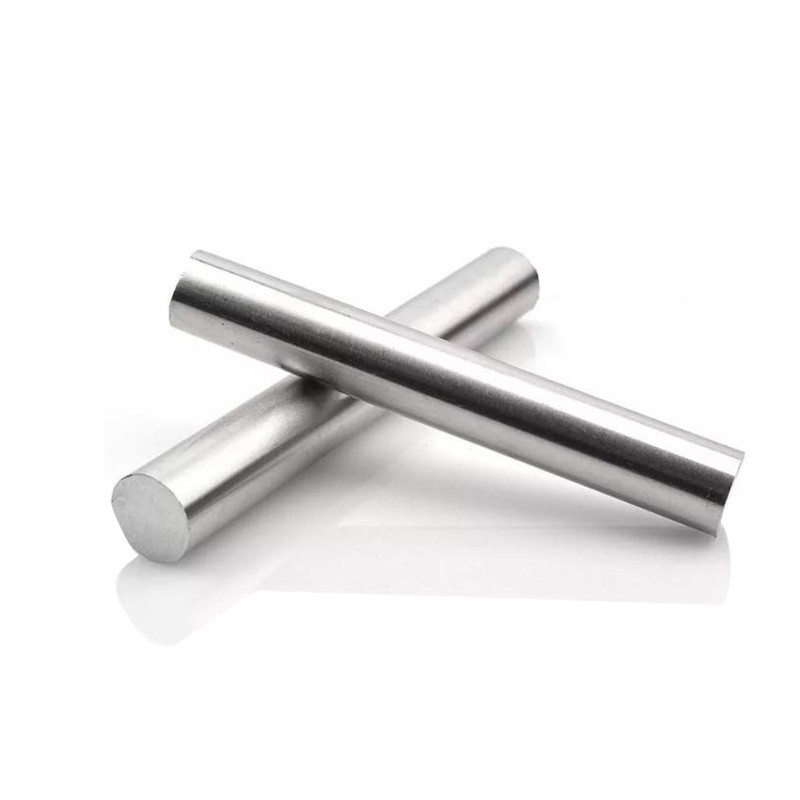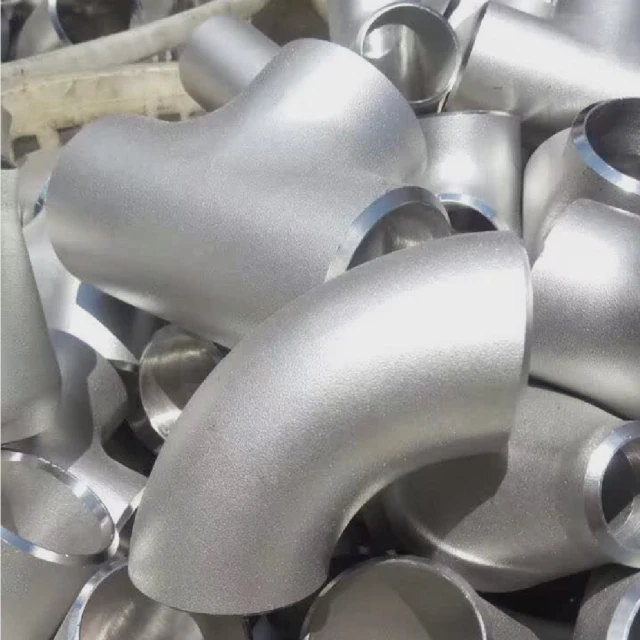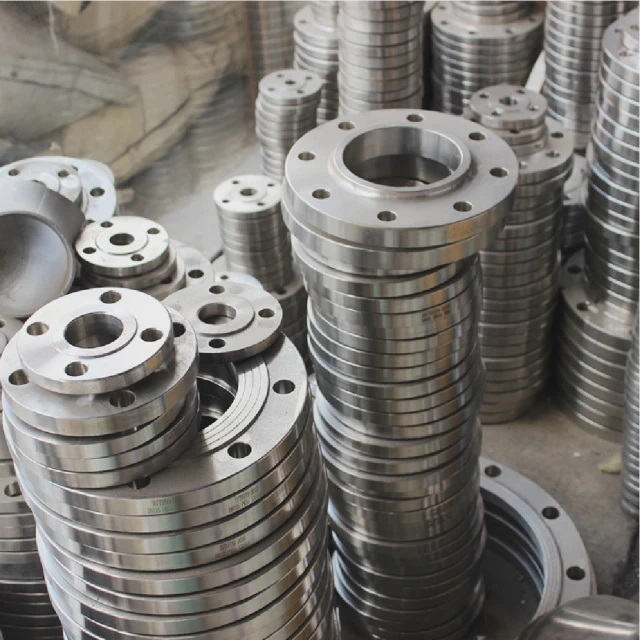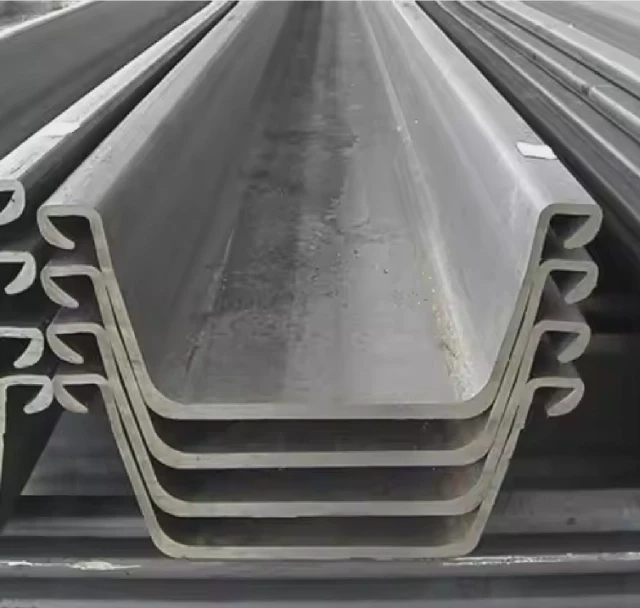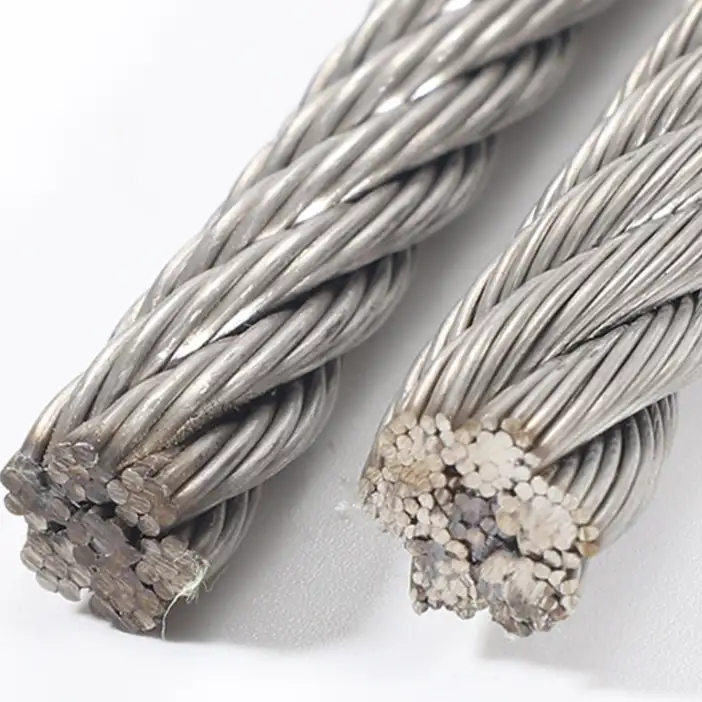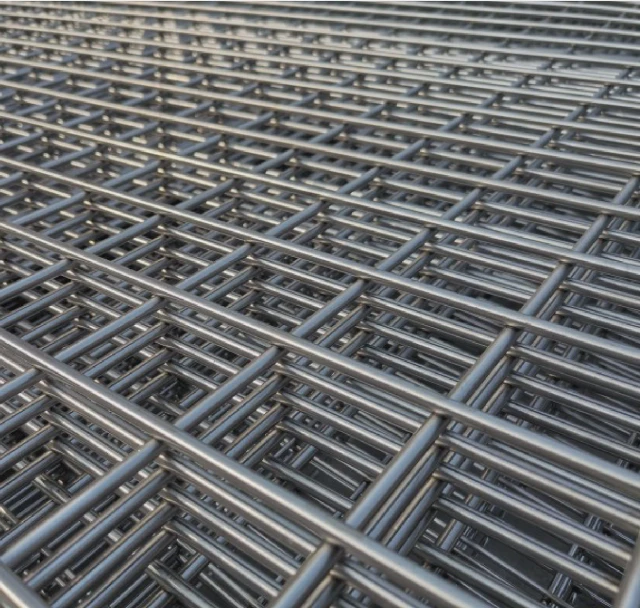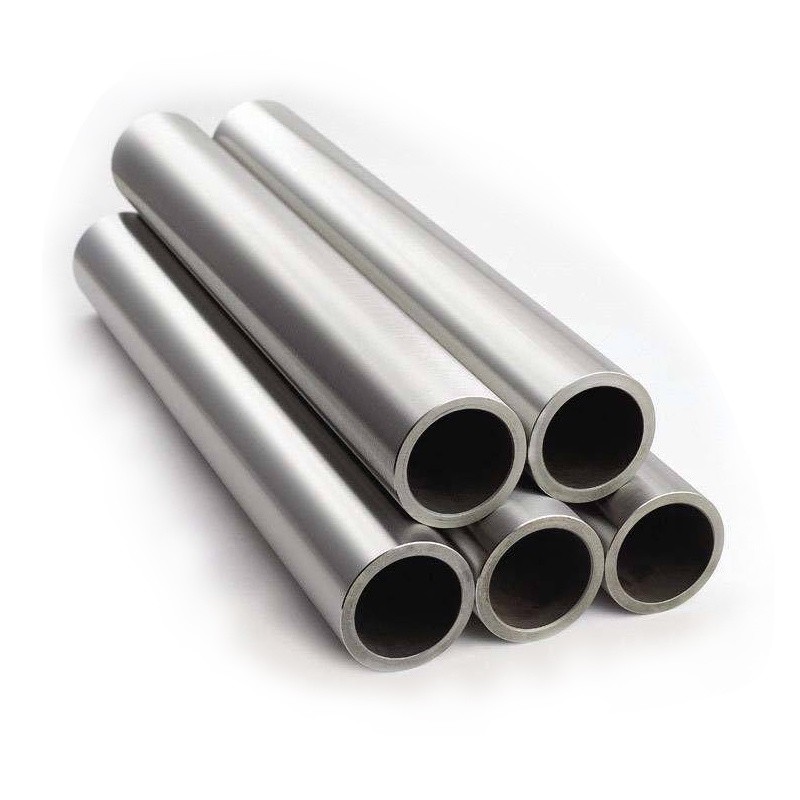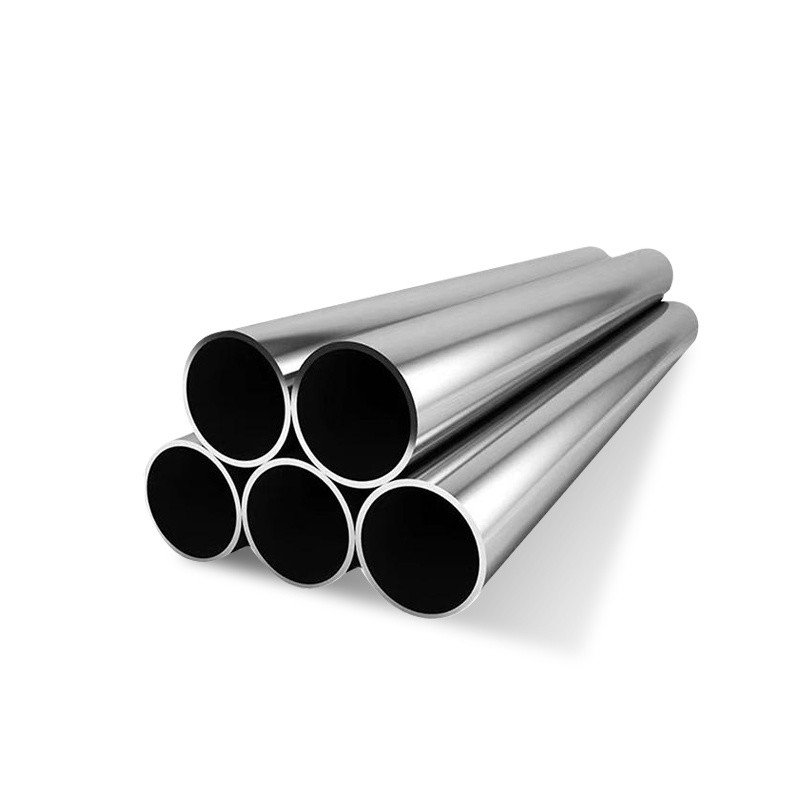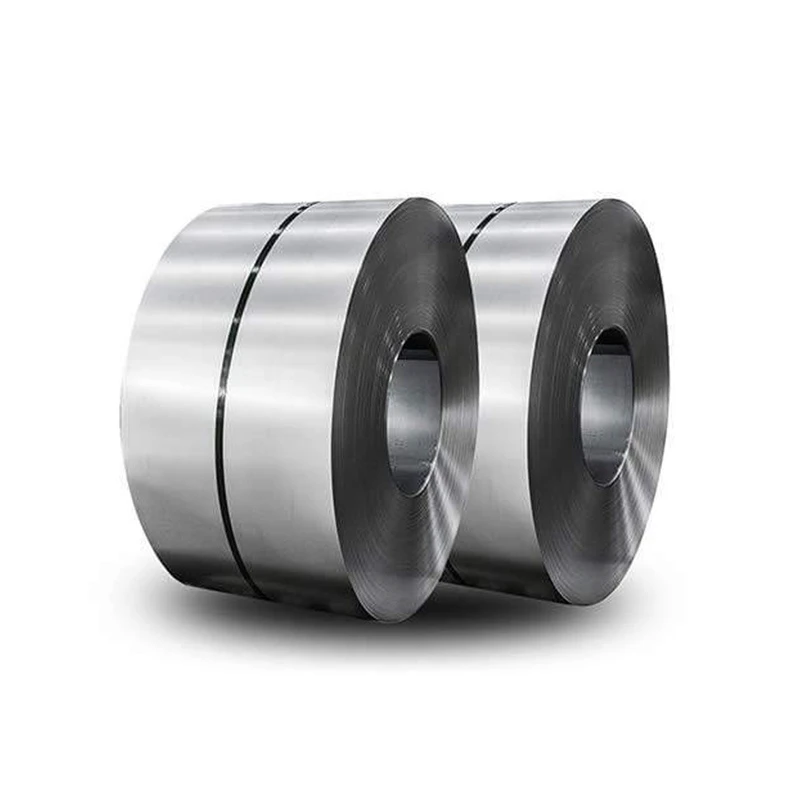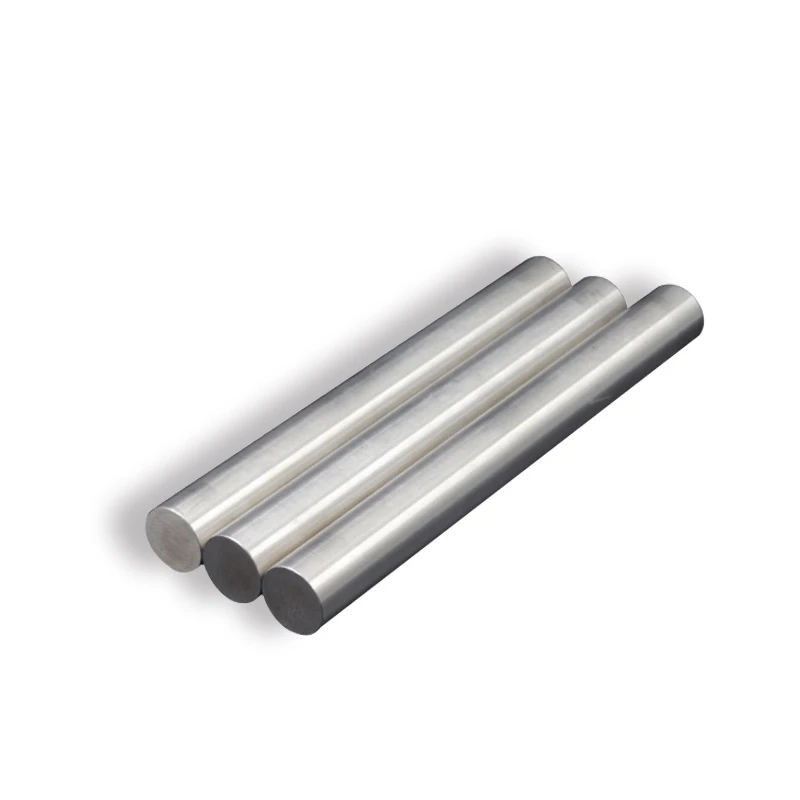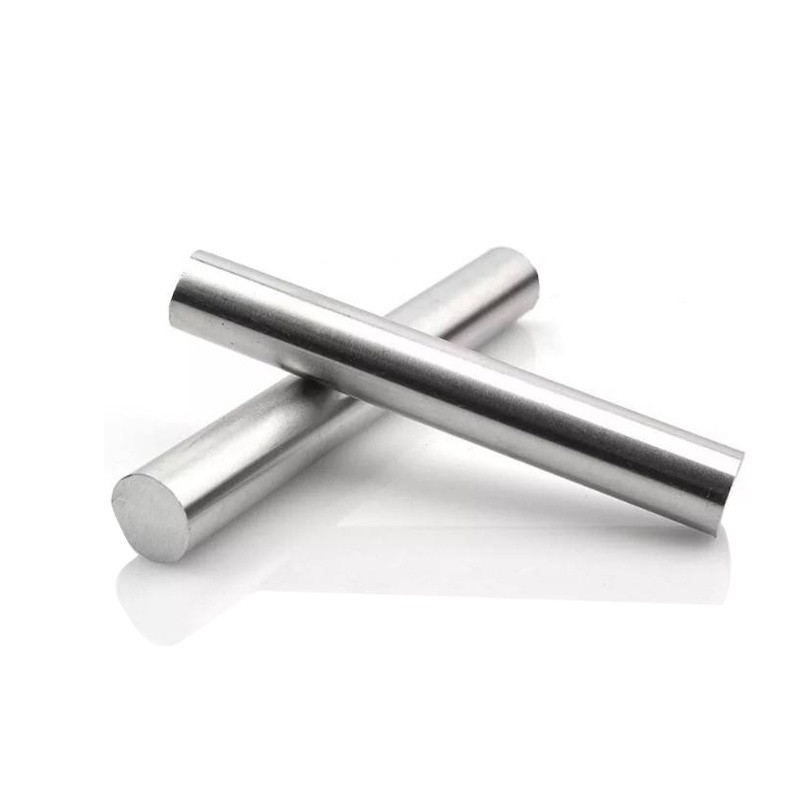
CATEGORIES
FEATURED PRODUCTS
416 Stainless Steel Bar
We offer this product and related grades with 100% factory direct pricing and free quotes available within 24 hours.
APPLICATION SCENARIOS

OUR ADVANTAGE

Certificate of Honor

PARTNER

Our Factory

We've been at the forefront of supplying specialized metal alloys for decades, and among our most versatile offerings is the 416 stainless steel bar. This free-machining martensitic stainless steel stands out in the industry due to its unique blend of corrosion resistance, strength, and unparalleled machinability, making it an indispensable material for countless applications where intricate component fabrication is paramount.
Chemical Composition
The performance of 416 stainless steel bar is fundamentally dictated by its meticulously balanced chemical composition. We understand that even slight variations in elemental percentages can significantly alter the alloy's properties, affecting everything from its corrosion resistance to its hardenability. The key elements, and their typical weight percentages, are what we meticulously control to ensure consistent quality for our clients.
|
Element |
Weight (%) (Typical Range) |
|
Carbon (C) |
0.15 max |
|
Manganese (Mn) |
1.50 max |
|
Silicon (Si) |
1.00 max |
|
Chromium (Cr) |
12.00 - 14.00 |
|
Phosphorus (P) |
0.060 max |
|
Sulfur (S) |
0.15 min |
|
Molybdenum (Mo) |
Optional (up to 0.60) |
What do these percentages tell us? The relatively low carbon content (0.15% max) is critical for maintaining the alloy's martensitic structure while ensuring reasonable toughness. However, it's the chromium content (12-14%) that primarily confers its corrosion resistance, forming a passive oxide layer on the surface. But, without a doubt, the most defining element is sulfur (0.15% min). Why is sulfur so important? It forms manganese sulfide inclusions throughout the microstructure, which significantly improve the alloy's machinability. These inclusions act as stress concentrators and lubricants during cutting, promoting the formation of small, brittle chips that are easily cleared from the cutting zone. We often get asked about the impact of sulfur on corrosion resistance; while it does slightly reduce it compared to low-sulfur stainless steels like 410, the gain in machinability often far outweighs this minor compromise for many applications. We also occasionally see additions of molybdenum, which can subtly enhance corrosion resistance and high-temperature strength, though it's not a primary constituent for this grade.
Mechanical Properties: Strength and Ductility in Harmony
When we evaluate any material, its mechanical properties provide a snapshot of its performance under various stresses. For 416 stainless steel bar, these properties are particularly noteworthy given its machinability. After all, what good is a machinable material if it lacks the necessary strength for its intended application? We categorize its mechanical properties based on its condition, typically annealed or hardened and tempered.
Typical Mechanical Properties (Annealed Condition)
| Property | Value | Unit |
| Tensile Strength | 480 - 690 | MPa |
| Yield Strength (0.2% Offset) | 275 - 480 | MPa |
| Elongation in 50mm | 20 - 30 | % |
| Hardness (Brinell) | 180 - 240 | HB |
| Hardness (Rockwell B) | 88 - 98 | HRB |
These values represent a good balance of strength and ductility, making it suitable for subsequent forming operations if required, though its primary use is in its machined state.
Typical Mechanical Properties (Hardened and Tempered Condition)
By heat treating 416 stainless steel, we can significantly enhance its mechanical properties, particularly its hardness and strength, albeit with a slight reduction in ductility. This makes it suitable for applications requiring greater wear resistance and structural integrity.
| Property | Value | Unit | Heat Treatment Condition |
| Tensile Strength | 690 - 965 | MPa | Hardened & Tempered |
| Yield Strength (0.2% Offset) | 480 - 790 | MPa | Hardened & Tempered |
| Elongation in 50mm | 12 - 20 | % | Hardened & Tempered |
| Hardness (Brinell) | 200 - 300 | HB | Hardened & Tempered |
| Hardness (Rockwell C) | 20 - 32 | HRC | Hardened & Tempered |
It's clear that through appropriate heat treatment, we can tailor the mechanical properties of 416 stainless steel to meet specific application demands. The ability to achieve respectable hardness levels, up to 32 HRC, is a distinct advantage for components subjected to abrasive environments.
Corrosion Resistance: Balancing Performance with Machinability
While 416 stainless steel is renowned for its machinability, its corrosion resistance is also a vital consideration. As a martensitic stainless steel, it relies on its chromium content to form a passive oxide layer, offering good resistance to atmospheric corrosion, fresh water, and mild acids. However, we must be realistic: the presence of sulfur, while a boon for machining, does slightly compromise its corrosion resistance compared to other stainless steel grades like 303 or 304.
For instance, 416 stainless steel generally exhibits good resistance to environments containing mild organic acids and weak alkalis. However, it is more susceptible to pitting and crevice corrosion in environments containing chlorides, such as saltwater or harsh industrial chemicals. We always advise our clients to carefully assess the corrosive environment their components will encounter. Is it a high-chloride setting? Then perhaps 416 isn't the optimal choice. Is it a general-purpose, mild atmospheric exposure? Then 416 will likely perform admirably. We've seen, for example, that in a standard salt spray test (ASTM B117), 416 stainless steel will show signs of rust much faster than a 304 grade, often within 24-48 hours, highlighting its reduced resistance to chloride attack.
Heat Treatment: Unlocking Potential
Heat treatment is an essential process for optimizing the mechanical properties of 416 stainless steel bar. As a martensitic alloy, it is capable of being hardened and tempered to achieve a range of strength and toughness combinations. We often guide our clients through the nuances of these processes to ensure they achieve the desired outcomes.
Annealing
Annealing is typically performed to soften the material for subsequent machining or to relieve internal stresses. We recommend heating to $650-760^\\circ C$ ($1200-1400^\\circ F$), followed by slow furnace cooling. This process refines the grain structure and reduces hardness, making the material easier to work with.
Hardening
To harden 416 stainless steel, we suggest heating to $950-1010^\\circ C$ ($1750-1850^\\circ F$) and then oil quenching or air cooling. The specific cooling medium depends on the section size and desired hardness. Rapid cooling is crucial to form a fully martensitic structure.
Tempering
Tempering is always performed after hardening to improve the alloy's toughness and ductility, as hardened martensite can be quite brittle. We typically recommend tempering at temperatures between $200-760^\\circ C$ ($400-1400^\\circ F$). The exact tempering temperature will determine the final hardness and mechanical properties. Lower tempering temperatures yield higher hardness but lower toughness, while higher temperatures result in reduced hardness but improved ductility. For optimal corrosion resistance, we often advise against tempering in the range of $400-580^\\circ C$ ($750-1075^\\circ F$), as this can lead to temper embrittlement and a reduction in corrosion resistance due to carbide precipitation.
Machinability
This is where 416 stainless steel truly shines. Its machinability rating is approximately 85% of that of AISI B1112 free-machining carbon steel, which is considered the benchmark. This high rating means that it can be machined at significantly higher speeds and feeds compared to other stainless steel grades, resulting in:
- Extended Tool Life: The brittle chips formed during machining reduce friction and heat buildup, prolonging the life of cutting tools.
- Faster Production Rates: Higher cutting speeds translate directly into reduced cycle times and increased output.
- Superior Surface Finish: The clean chip breakage often leads to smoother, more consistent surface finishes, reducing the need for secondary finishing operations.
- Reduced Power Consumption: Less force is required to remove material, leading to energy savings in manufacturing operations.
We often tell our clients that while 303 stainless steel also offers good machinability, 416 often surpasses it, particularly in applications where very high cutting speeds are employed. This superior performance is a direct result of its carefully controlled sulfur content, which forms numerous manganese sulfide inclusions. These inclusions act as internal lubricants and chip breakers, facilitating the smooth removal of material. We've observed that in automated screw machine operations, the benefits of 416's machinability are particularly pronounced, allowing for long, uninterrupted production runs.
Applications: Where 416 Stainless Steel Excels
Given its exceptional machinability combined with reasonable corrosion resistance and hardenability, 416 stainless steel bar finds its way into a diverse array of industries and applications. We consistently see it chosen for components where precision machining and good performance are critical.
- Automatic Screw Machine Parts: This is arguably its most common application. Its free-machining properties are ideal for producing high volumes of intricate parts like shafts, gears, and fasteners.
- Valve Components: Seats, stems, and trim are frequently made from 416 due to its machinability and resistance to mild corrosive media.
- Pump Parts: Impellers, shafts, and other internal components benefit from its strength and wear resistance after heat treatment.
- Motor Shafts: Its combination of strength, machinability, and magnetic properties (as a ferromagnetic material) makes it suitable for various motor applications.
- Studs, Bolts, and Nuts: Where fast production of threaded fasteners is required, 416 is an excellent choice.
- General Machined Components: Any part that requires extensive turning, drilling, or milling in a mild corrosive environment is a potential candidate for 416.
- Firearms Components: We've seen it used in certain gun components where precision and moderate corrosion resistance are needed.
We often ask our customers about the specific demands of their application to ensure 416 is the right fit. Is it exposed to aggressive chemicals? Does it need to withstand extreme temperatures? These questions help us guide them toward the optimal material solution.
Comparative Analysis: 416 vs. Other Stainless Steels
To truly appreciate the value of 416 stainless steel, it's beneficial to compare it with other commonly used stainless steel grades. This helps us highlight its unique positioning in the material landscape.
416 vs. 303 Stainless Steel
| Feature | 416 Stainless Steel | 303 Stainless Steel |
| Type | Martensitic | Austenitic |
| Machinability | Excellent (higher for some applications) | Very Good |
| Corrosion Resistance | Good (fair in chloride environments) | Excellent (superior to 416) |
| Hardenability | Hardened by heat treatment | Cannot be hardened by heat treatment |
| Magnetic Property | Ferromagnetic | Non-magnetic |
| Weldability | Poor (prone to cracking, requires pre/post-heat) | Good (can be readily welded) |
| Applications | Screw machine parts, valve components, motor shafts | Nuts, bolts, fittings, shafts (where higher corrosion resistance is needed) |
We frequently encounter the debate between 416 and 303. While both are free-machining grades, their fundamental differences lie in their metallurgical structure and resulting properties. If your application demands superior corrosion resistance and weldability, 303 might be the better choice, even with slightly lower machinability in some cases. However, if pure high-speed machining performance is the absolute priority, 416 often takes the lead.
416 vs. 304 Stainless Steel
| Feature | 416 Stainless Steel | 304 Stainless Steel |
| Type | Martensitic | Austenitic |
| Machinability | Excellent | Poor (gummy, chip breakage issues) |
| Corrosion Resistance | Good (fair in chloride environments) | Excellent (very good in many environments) |
| Hardenability | Hardened by heat treatment | Cannot be hardened by heat treatment |
| Magnetic Property | Ferromagnetic | Non-magnetic |
| Weldability | Poor | Excellent |
| Cost | Generally lower than 304 (due to lower alloy content) | Generally higher than 416 |
| Formability | Limited | Excellent (can be deep drawn) |
Comparing 416 with 304 highlights the trade-offs. 304 is the workhorse of the stainless steel family, known for its excellent corrosion resistance and weldability, but its machinability is significantly inferior. If your primary concern is high-volume, cost-effective machining, 416 is the clear winner. However, for structural applications or environments requiring superior corrosion resistance, 304 remains the preferred choice.
Finishing and Post-Processing Considerations
After machining, certain finishing and post-processing steps can further enhance the performance and appearance of 416 stainless steel bar components. We always advise our clients on these crucial stages.
Surface Finishing
While 416 often yields an excellent as-machined surface finish, additional polishing or grinding can be performed for aesthetic purposes or to reduce surface roughness for specific functional requirements. However, it's important to avoid electropolishing, as the sulfide inclusions can lead to pitting.
Passivation
Even though 416 stainless steel forms a passive oxide layer naturally, we strongly recommend passivation after machining. This chemical treatment removes free iron and other contaminants from the surface, enhancing the natural chromium oxide layer and significantly improving corrosion resistance. We typically recommend nitric acid or citric acid passivation, adhering to standards like ASTM A967. This step is critical for maximizing the material's inherent corrosion resistance.
Plating
For enhanced wear resistance or even better corrosion protection in specific environments, 416 stainless steel parts can be plated with various materials, such as nickel, chromium, or even specialized coatings. This can be a cost-effective way to extend the lifespan of components in demanding applications.
Quality Assurance and Specifications
At every stage of our supply chain, from sourcing raw materials to final inspection, we adhere to stringent quality control measures for our 416 stainless steel bar. We ensure that our products consistently meet or exceed industry standards. The primary specifications governing 416 stainless steel include:
- ASTM A582: Standard Specification for Free-Machining Stainless Steel Bars
- AMS 5610: (Aerospace Material Specification) Bars, Forgings, and Rings, 12.5Cr - 0.30S (SAE 416), Solution Heat Treated, Free-Machining
- UNS S41600: Unified Numbering System for Metals and Alloys
We meticulously verify that our material conforms to these standards, providing our customers with confidence in its chemical composition, mechanical properties, and overall quality. Our commitment to these specifications ensures consistency and reliability, which are paramount in precision manufacturing.
Environmental and Sustainability Aspects
In today's manufacturing landscape, considering the environmental impact of materials is becoming increasingly important. We acknowledge that the production and processing of steel, while energy-intensive, are continuously improving in terms of sustainability. 416 stainless steel, like other stainless steels, is 100% recyclable. This means that at the end of its life cycle, it can be remelted and reformed into new products without significant loss of properties, contributing to a circular economy. The long lifespan of stainless steel products also reduces the frequency of replacement, further minimizing resource consumption. We are committed to working with mills that prioritize sustainable practices and reduce their carbon footprint.
Frequently Asked Questions (FAQs)
We've compiled some of the most common questions we receive regarding 416 stainless steel bar to provide quick, comprehensive answers.
1. Is 416 stainless steel magnetic?
Yes, 416 stainless steel is ferromagnetic, meaning it is magnetic. This is due to its martensitic crystal structure. Unlike austenitic stainless steels (like 304 or 316), which are non-magnetic in their annealed state, 416 will be attracted to a magnet.
2. Can 416 stainless steel be welded?
While 416 stainless steel can be welded, it is generally not recommended due to its high sulfur content. The sulfur can lead to hot cracking and porosity in the weldment, making it challenging to achieve sound, ductile welds. If welding is absolutely necessary, preheating and post-weld heat treatment (annealing or tempering) are typically required to minimize cracking and restore properties, but even then, weld integrity can be compromised. We usually advise alternative joining methods if possible.
3. What is the main advantage of 416 stainless steel over other grades?
The primary advantage of 416 stainless steel is its superior machinability. Its intentionally high sulfur content leads to excellent chip breakage and reduced tool wear, making it the preferred choice for high-volume production of intricate parts on automatic screw machines where machining efficiency is critical.
4. How does the corrosion resistance of 416 compare to 304?
The corrosion resistance of 416 stainless steel is lower than that of 304 stainless steel, particularly in environments containing chlorides. While 416 offers good resistance to atmospheric corrosion and mild acids, the sulfur inclusions that aid machinability can also act as sites for pitting corrosion in more aggressive environments. 304, being an austenitic grade, provides significantly better general and localized corrosion resistance.
5. What are common applications for 416 stainless steel bar?
Common applications for 416 stainless steel bar include automatic screw machine parts (e.g., shafts, gears, fasteners), valve components (stems, trim), pump parts (impellers, shafts), motor shafts, and general machined components where high machinability and moderate corrosion resistance are required.
6. Can 416 stainless steel be heat treated?
Yes, 416 stainless steel is a heat-treatable alloy. It can be hardened by austenitizing and quenching, followed by tempering to achieve a wide range of strength and toughness combinations. This allows for tailoring its mechanical properties to specific application requirements, such as increased hardness for wear resistance.







